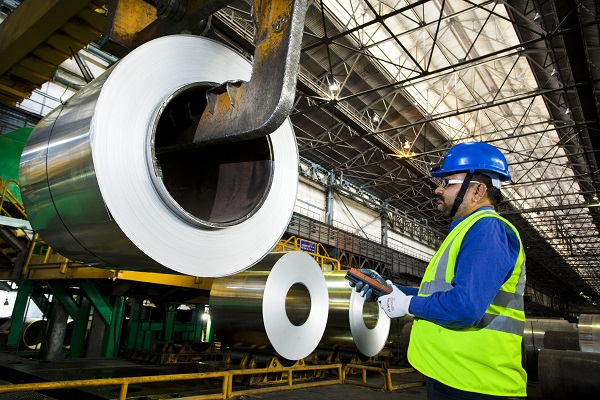.png)

Dev Chandrasekhar advises corporates on big picture narratives relating to strategy, markets, and policy.
July 18, 2025 at 11:21 AM IST
Investors love a good turnaround. Vedanta Limited appears to serving up much of that: net debt, as of March 31, 2025, down to ₹532.5 billion from ₹740 billion in three years; improved credit metrics; and refinanced bonds with lower rates. The company reported record revenue of ₹1.5 trillion in 2024-25, with consolidated net profit jumping 172% year-on-year to ₹205.4 billion.
But when a company has spent more than a quarter-century perfecting the art of financial engineering and regulatory arbitrage, recent announcements of improvement deserve wary scepticism.
The latest Viceroy Research report alleging "Ponzi-like" structures isn't an isolated attack on an otherwise clean company. It's the predictable latest chapter in a governance horror show that began when Sterlite Industries was found manipulating stocks alongside scam-accused Harshad Mehta in 1998.
Governance Pattern
Anil Agarwal has mastered a simple formula: when debt gets uncomfortable, restructure to push liabilities onto public shareholders while keeping control. When regulations get inconvenient, lobby quietly to change them. When markets turn sour, attempt cheap buybacks of public stakes.
The pattern is so consistent it's almost admirable in its audacity. Take the 2012 merger that created Sesa Sterlite. Proxy advisers reportedly called it a strategy to dump ₹490 billion in debt onto Indian shareholders. The transaction went through anyway. Or consider Vedanta's pandemic lobbying campaign to weaken environmental regulations. Whilst other companies struggled with compliance, Vedanta was reportedly working behind closed doors to eliminate public hearings for mining expansions. Even the recent delisting attempt followed the playbook: exploit market distress to buy out minorities at a steep discount to book value.
Viceroy Research has credibility that makes their latest allegations impossible to ignore. Their forensic work exposed Wirecard's multi-billion-euro fraud after German regulators initially dismissed their findings. When they publish 87 pages of detailed allegations, smart money pays attention.
Their Vedanta claims are specific and verifiable. The allegations include ₹31 billion in unexplained interest expenses, ₹28 billion in questionable brand fees, and auditors operating out of apartments with Hotmail addresses.
More troubling is Viceroy's core thesis that UK-based parent Vedanta Resources Limited (VRL) survives by forcing Indian subsidiary
Vedanta Limited to pay massive dividends funded by borrowings, not profits. Since VRL owns only 56% of Vedanta Ltd, every rupee extracted means 44 paise goes to minority shareholders who get no benefit from supporting the parent's debt structure.
Vedanta's response has been tellingly dismissive. Rather than providing detailed rebuttals backed by data, the company has yet to come up with a comprehensive response to Viceroy's specific charges.
Instead, a day after the revelations, chairman Anil Agarwal was confidently announcing plans to double oil & gas production and invest in a new smelting complex—a classic deflection tactic. Proxy adviser InGovern rushed to Vedanta's defence, attacking the
Viceroy report as a "typical playbook of short-sellers" rather than addressing the substantive financial allegations.
Financial Risk
Even with recent improvements, the structural dependency persists. Credit rating agency CRISIL acknowledges that Vedanta Resources' debt servicing remains "primarily dependent on dividend inflows from Vedanta Limited and management/brand fees." That's a red flag for any investor. Public companies should generate cash for shareholders, not serve as ATMs for debt-laden parents.
Vedanta Limited carries ₹371 billion in net debt against ₹57 billion in cash, a concerning liquidity gap for a company expected to fund its parent's obligations. Meanwhile, entities like THL Zinc Ventures Ltd , a direct wholly-owned subsidiary of Vedanta Ltd that holds Vedanta's international zinc assets, including 69.6% of Black Mountain Mining Pty Ltd in South Africa and 100% of THL Zinc Namibia Holdings (Pty) Ltd in Namibia, hold ₹28 billion net debt. The company essentially represents the kind of debt-laden, offshore subsidiary structure that makes Vedanta's finances opaque.
India's major banks have ₹300-400 billion in exposure to Vedanta, spanning State Bank of India, Bank of Baroda, Punjab National Bank, IDBI Bank, Bank of Maharashtra, and major private lenders. That's taxpayer money at risk if the group's financial engineering unravels. Banks whose balance sheets were painstakingly cleaned up through massive write-offs now face exposure to a group with a quarter-century track record of governance controversies.
Investigation Warranted
Despite Viceroy's detailed allegations, Securities and Exchange Board of India hasn't announced an investigation. Neither has the Ministry of Corporate Affairs or the National Financial Reporting Authority. This silence is particularly troubling given Vedanta's track record of stock manipulation scandals, illegal political donations, and environmental regulatory capture.
The Wirecard precedent is instructive. German regulators initially dismissed Viceroy's findings, only to face massive embarrassment when the fraud was exposed. Indian authorities risk a similar fate by ignoring credible allegations against a company with Vedanta's governance history.
The proposed demerger of Vedanta's businesses into six separate entities looks suspiciously like another round of the old game. The plan appears designed to split debt across weaker standalone entities whilst maintaining control at the top. The operational reality reinforces this suspicion. Strong metals businesses that drove 2024-25 profits will likely secure attractive valuations, whilst the struggling oil and gas operations get saddled with debt and face investor scrutiny as a standalone entity. Smart investors should demand answers to Viceroy's specific allegations before betting on Vedanta's transformation story.
The ₹31 billion interest expense discrepancy alone warrants explanation, the brand fee structure needs commercial justification, and the audit quality deserves scrutiny.
The Bottom Line
When a research firm with Wirecard on its track record publishes detailed forensic allegations against a company with Vedanta's history, investigation isn't optional--it's prudent risk management.
Indian regulators have an opportunity to demonstrate that past patterns of behaviour matter. The cost of investigation is minimal compared to the potential cost of another corporate scandal funded by public sector banks.
In corporate governance, leopards rarely change their spots. Vedanta's metals-driven improvements might be real, but betting against more than 25 years of established patterns requires more than mere investor or regulator faith.




